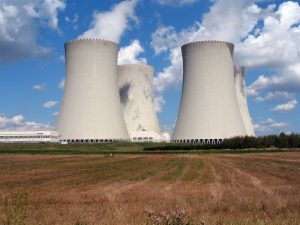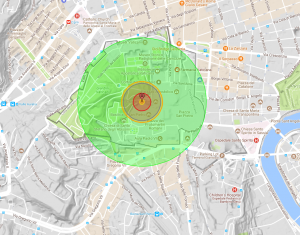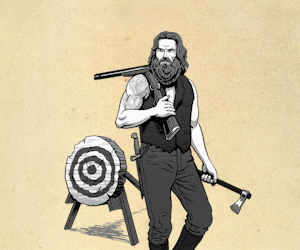How much do you really know about nukes these days? In the 80’s and 90’s, we all grew up knowing for certain that the world was going to end in a ball of searing heat because some politician got bent out of shape about some other politician. Thankfully, it hasn’t come to that yet.

We know about nukes because we heard so much about them in the news in that era. All the smart kids did, anyway, because it was on our minds. Here are some of the things I learned about nukes. First of all, it’s spelled and pronounced nuclear (new-clee-er). Don’t be that guy who says nook-u-lar or we will point and laugh at you. GWB drove me nuts with that through his whole presidency. How does a guy who may need to push the button not know how to say the word?
The word ‘nuclear’ means, of or dealing with the nucleus, as in, of an atom. There are two flavors of messing with nuclei. We have nuclear fission, which is when the nucleus of atoms are split into parts by bombardment. That leaves nuclear fusion, where nuclei are jammed together with such force or pressure that they become one and by extension, a new substance. Both methods release a tremendous amount of energy. That’s why we use them, but we use them for different purposes.
What do we even do this for?

Remember that energy we talked about? That’s why we need this technology. Like any technology, it can be used for good or for evil. Fission is usually used to run power plants. The fissile (splittable) material doesn’t turn directly into electricity, though. Essentially it gives off a tremendous amount of heat which boils water which turns steam turbines. It’s no different than a steam locomotive except that instead of driving a train it makes power so you can charge your stupid iPad, and instead of coal it uses atoms and technology you’ll likely never understand because you don’t want to.
Fusion, on the other hand, is a little less friendly. It’s a lot harder to control compression once it starts. The chain reaction goes from tiny to supercritical in fractions of a second. As a result, we tend to use this one for weaponry. That hasn’t stopped many from attempting to make it into a power source, arguably with only limited success.
What’s fun about this?
Nuclear anything has a ‘cool’ factor that’s off the charts. Everyone likes to point to Chernobyl as a reason not to use nuclear power but that reactor should not have existed. Modern power plants are not only nothing like that one, they use fissile materials that won’t strip all the paint off your house and give your family a permanent orange afro (Spies Like Us, FTW).1 In fact, the bulk of the opposition to nuclear power is based on half-truths and outright lies. Turns out nuclear power is cleaner than solar and safer than coal. That’s not the point of this article, though.

The bombs are the real money. Think about a device that can instantly incinerate anything it touches. It’s fireworks on an epic scale. Yes, it’s terrible. It’s also awesome. That kind of power is measured in the energy it releases as measured in the equivalent number of tons of TNT. That’s a number called ‘yield.’2 A 20-ton nuclear bomb (the smallest ever produced by the US, known as Davy Crockett) would basically wipe out the middle of Vatican City and irradiate everything inside the walls. No, I’m not advocating for that. It’s just a convenient scale reference. Rome would be basically fine, but no more Basilica, no more Sistine Chapel, etc. Only the underground stuff would survive.
Davy Crockett was more than a volunteer
How do I know what Davy Crockett would do, though? Funny you should ask. There is a convenient little website that tells the tale of what any known nuke would do to any known city. It’s called Nuclear Secrecy, and they have an app that uses Google Maps to plot damage by nukes. The app is called Nukemap, and it’s fun to play with if you’re morbid. You can assign your fake bomb a yield and pick a city, or you can select from a list of all known bombs. The whole site has a conspiratorial bent, but nukes are pretty cloak and dagger.
Why on earth talk about this?
Why not? Some people want to close their eyes at the oncoming train, some want to look the oncoming train dead in the face. I’m the latter. ‘What if’ scenarios and beer are a good time. You won’t bother visiting the site if you’re not like me. That’s fine. I’m not judging either way. Suffice it to say, the fact that it exists tells us all that people still think about the most amazing and terrible creation mankind has yet conceived. Stare down that train. Let it know who’s boss.











I think the average person overestimates how much direct damage the blast from even larger nuclear bombs do and what will be affected. Think the fallout series, for example – it’s a couple centuries after nuclear war, and every building is ruins for dozens of miles, and all the plants are dead. In reality though, buildings away from the blast site wouldn’t be damaged from kinetic damage so much as lack of maintenance after humans left, and plant life would be thriving (see: Chernobyl).
That’s the beauty of fallout maps. They tell a different story than video games. The game has that ‘browning’ for artistic effect. It’s hard to sell ‘desolation’ with flourishing vegetation. The reality is that life finds a way (as evidenced by Chernobyl). Some of the plants and animals there are taking on some strange characteristics, but they’re still there. They just hypercharged evolution.